Industrial Insect Light Traps: Effectiveness and Benefits
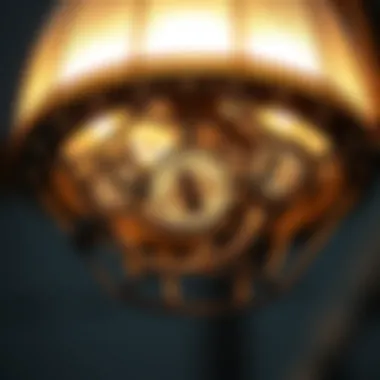
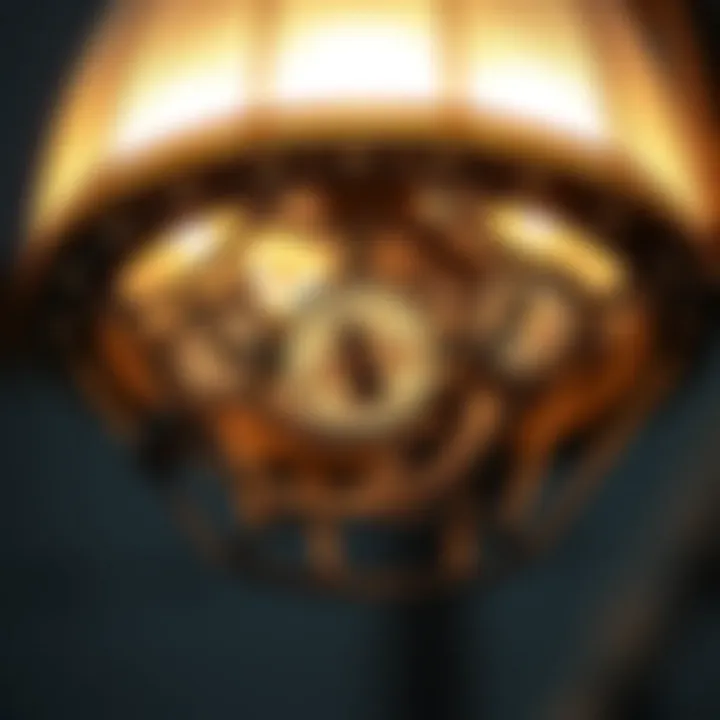
Intro
In a world where insects buzz around – some welcome, others not so much – understanding the role industrial insect light traps play in pest control can be a game changer. These traps don’t just sit pretty under shop lights or in warehouses; they actively combat pest populations that threaten product integrity and hygiene standards in various industries. Ease of use and effectiveness make these traps particularly appealing to both homeowners seeking a pest-free environment and professionals in pest management.
The nature of industrial insect light traps is built on a foundation of scientific principles, combining light, attraction, and ultimately, capture. As we explore this topic, we will map out how these devices work, their advantages, and their wider applications. But before we dive too deep into the nitty-gritty, it's crucial to recognize the types of pests those traps are designed to catch. Hence, we begin our journey with pest identification.
Prolusion to Industrial Insect Light Traps
In the realm of pest control, understanding the tools that help maintain a clean and safe environment is crucial. Industrial insect light traps, those often-overlooked devices, play an integral role in protecting both commercial and residential spaces from unwanted invaders. They are not just gadgets but rather a well-thought-out solution to some common pest problems. In this section, we will explore their purpose, historical development, and relevance in today's world.
Definition and Purpose
At their core, industrial insect light traps are designed to lure and capture flying insects, particularly those nuisances that tend to invade food storage areas, restaurants, and other public spaces. These traps use light as a primary attractant due to insects' natural tendencies to gravitate towards illumination, especially ultraviolet light. By employing either adhesive surfaces or electric grids, these traps effectively reduce insect populations without heavy reliance on chemical pesticides.
The purpose goes beyond mere capture; these traps contribute to a broader integrated pest management strategy. Homeowners and managers in various industries can benefit from their presence, ensuring that pest-related disruptions are minimized, thereby guarding against health risks and maintaining cleanliness.
Historical Context
Historically, the concept of insect traps is as old as human settlement itself. Ancient civilizations, from the Egyptians to the Chinese, employed various rudimentary trapping methods to fend off pests. However, the modern iteration of insect light traps began making waves in the early 20th century.
During the 1920s, with the advancement of electricity, the first electric fly traps emerged, showcasing a shift from passive traps that relied on bait to active systems utilizing light. This innovation not only simplified the capture process but also led to more efficient and larger-scale applications, especially in urban settings. Fast forward to today, and these traps are ubiquitous in industries like agriculture, food processing, and hospitality, reflecting a continuous adaptation of technology to meet evolving pest control demands.
"The development of industrial insect light traps transformed pest management, shifting the paradigm toward a more integrated and efficient approach."
As we delve deeper into this article, readers will uncover not only the mechanism of action behind these traps but also their various types and how they contribute to effective pest management strategies. This foundational understanding sets the stage for appreciating the complexities and innovations present in the field of pest control.
Mechanism of Action
Understanding the mechanism of action behind industrial insect light traps is pivotal for anyone looking to get a handle on pest management. This concept not only dives deep into the physiological reactions triggered by these devices but also highlights their function in a practical setting. Proper awareness helps in devising an effective pest control strategy.
Light Attraction
At the core of light traps is the principle of light attraction. Many insects, especially flying ones, are drawn to light due to their natural behaviors. This phenomenon, termed phototaxis, sweetly explains why these traps are effective. In indoor and outdoor settings alike, strategically placed light traps effectively lure problematic insects.
Moreover, the wavelength of the light used plays a significant role. Ultraviolet light, for instance, has a unique allure for certain pests such as moths and flies. Studies suggest that using a trap that exploits this attraction can greatly improve capture rates. The more light that a trap can efficiently emit without becoming a nuisance to humans, the better it can function in keeping environments insect-free.
Capture Methods
Industrial insect light traps primarily use two effective methodologies: sticky traps and electrical grids. Both methods support the overarching aim of trapping pests, but they operate differently, making them suitable for distinct situations.
Sticky Traps
Sticky traps are quite a popular choice in pest control. The fundamental aspect of these traps is their simplicity and ease of use. When an insect flies toward the light source, it becomes ensnared within a sticky substance on the surface of the trap. This basic, yet effective mechanism is a primary advantage of sticky traps. Their other key characteristic is that they do not require power; they just need to be located in the right spot. This makes them an economic option, especially for home and small business owners looking to maintain a pest-free environment.
However, sticky traps do have their downsides. They can become messy over time, and depending on the environmental conditions, they may need regular replacements. They tend to capture only flying insects and might be ineffective against crawling pests.
Electrical Grids
On the other hand, electrical grids employ a more technologically advanced approach. These traps utilize an electric current passed through grids. When an insect makes contact with the wires, it gets zapped, effectively rendering it harmless. A key feature here is that although they require electricity, they can continuously operate without frequent maintenance, making them a robust solution in critical situations.
Despite this, the electrical grid traps have their own considerations. There’s the clear safety concern around accidentally shocking pets or other animals. Additionally, they can be somewhat costlier initially compared to sticky traps, but their efficiency can potentially outweigh the initial investment for larger operations dealing with significant insect invasions.
Types of Industrial Insect Light Traps
Understanding the various types of industrial insect light traps is crucial for anyone in pest management, be it professionals or keen homeowners trying to maintain a pest-free environment. Each type carries its own merits and weaknesses, influencing choices based on specific needs and environments. This section will cover UV light traps and LED light traps, providing insights on features, applications, benefits, and limitations.
UV Light Traps
Features
UV light traps harness ultraviolet light to lure insects effectively. One defining characteristic is the use of specially designed bulbs that emit UV wavelengths. This specific light is invisible to the human eye but is a beacon for many flying insects—like moths and flies—thus enhancing their efficacy. Another noteworthy aspect is the durable material used in the trap designs, which allows them to withstand various external conditions while still performing optimally.
UV traps are popular due to their proven effectiveness, making them a staple in numerous commercial environments. However, a downside is their frequent need for bulb replacements and maintenance—an essential detail for anyone considering their use.
Applications
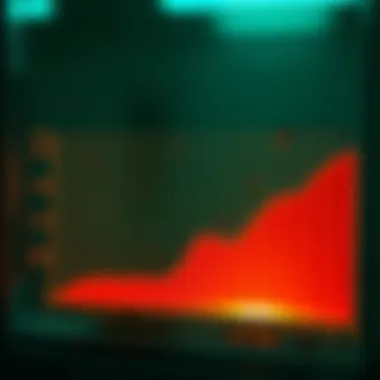
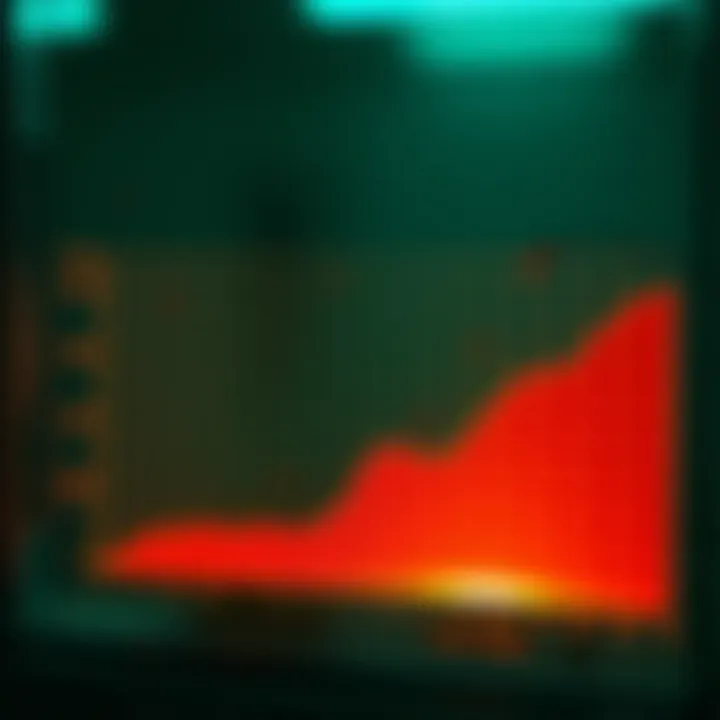
The applications of UV light traps are broad. They shine in environments like restaurants and food processing plants where sanitation is imperative. Additionally, they can serve sectors such as hospitals and labs where pests aren’t just a nuisance but a potential health risk.
Key features lie in their versatility; UV traps can be discreetly integrated into any interior design without being an eyesore. One unique aspect of these traps is that they are both effective and environmentally friendly. However, their effectiveness diminishes in bright surroundings, making placement strategic for best results.
LED Light Traps
Benefits
LED light traps are the new kids on the block but are gaining traction quickly. They shine particularly bright in their energy efficiency, consuming very little power compared to traditional UV models. Another golden nugget is their longevity; LED lights last significantly longer before needing replacement, making them a wise investment in the long run.
Homeowners looking for cost-effective and modern solutions find LED traps appealing. They not only catch pests effectively but also often feature aesthetic designs that complement contemporary interiors.
Limitations
Yet, no method is without its drawbacks, and LED light traps are no exception. One limitation is the spectrum of light they emit; while they effectively attract certain pests, others remain unaffected. This fact can be a consideration for those targeting specific species.
Furthermore, true to their modernity, these traps sometimes come at a higher upfront cost, which may deter budget-conscious buyers. The placement remains a crucial factor as indoor light can limit their effectiveness, much like their UV counterparts.
In summary, selecting the right type of industrial insect light trap hinges on weighing these features, applications, benefits, and limitations carefully. Ensuring they align with one’s specific needs can create a noticeable difference in pest management.
Benefits of Using Insect Light Traps
Insect light traps serve as reliable allies in the ongoing battle against unwanted pests. These devices stand out for their ability to efficiently manage pest populations in both commercial and residential properties. Understanding the benefits of these traps not only highlights their importance but also prompts thoughtful discussions about their role in integrated pest management strategies. Let's dive into some crucial advantages that make insect light traps a preferred choice for many homeowners and pest control professionals alike.
Efficiency in Pest Control
One of the most significant benefits of using insect light traps is their remarkable efficiency in controlling pest populations. The way these traps operate utilizes simple physics—specifically light attraction, which draws insects toward the source. Once the pests get too close, they either land on sticky surfaces or come into contact with electrified grids, securing their capture.
- Targeted Species: Unlike many common pest control methods, light traps specifically target flying insects like moths, flies, and gnats without affecting beneficial species such as bees or ladybugs.
- Real-time Monitoring: These traps can be particularly insightful in that they provide an immediate feedback loop about pest activity. This allows homeowners to gauge when and where pest issues may spike, giving them a chance to act swiftly.
- Reduction of Chemical Use: With a robust insect light trap in place, the reliance on chemical insecticides can drop significantly. This is not only better for health but also lessens the environmental impact associated with toxic substances.
"The beauty of insect light traps is that they quietly go about their business without causing disruption to the environment while still keeping homes pest-free."
Non-Toxic Option
In the age where the discussions around health and safety have gained significant prominence, the non-toxic nature of insect light traps is a critical benefit. Homeowners are increasingly looking for pest control methods that do not pose health risks to humans or pets.
- Chemical-Free Approach: Since these traps rely primarily on light to attract pests, there is no use of harsh chemicals or pesticides that may linger in the atmosphere. This aspect is particularly appealing to families with young children or pets.
- Eco-Friendly Option: Given the global push for sustainable living, using insect light traps aligns well with eco-conscious practices. This system poses minimal harm to the environment, promoting biodiversity while controlling pest populations.
- No Harmful Residues: Household cleaners and insecticide sprays often leave residues that can be harmful if ingested. With light traps, there’s peace of mind knowing that no harmful chemicals are present in the living spaces.
This non-toxic option contributes to maintaining a healthier indoor environment, reinforcing why insect light traps are an increasingly attractive choice for households and businesses aiming for pest prevention without safety compromises.
Limitations and Considerations
Understanding the limitations and considerations related to industrial insect light traps is crucial for anyone looking to implement them effectively. While these traps offer numerous benefits, they are not a blanket solution for every pest problem. It's essential to recognize the specific targets of these traps and the external elements that might affect their efficiency.
Target Species
One of the primary limitations when it comes to insect light traps is their target specificity. Not all flying insects are drawn to light in the same way. For instance, moths and some types of flies are naturally attracted to UV light, while others may show little to no interest. This limitation can lead to a scenario where deploying these traps yields minimal results against unwanted species like wasps or some beetles which may bypass them entirely.
Key Species to Consider
- Moths: Typically good catches for UV traps, often seen as pests in food warehouses.
- Flies: House flies and fruit flies may be effectively captured, yet their patterns can limit effectiveness.
- Bees: Generally, not attracted and may even be deterred by bright light.
Thus, before investing in such traps, an owner must analyze the specific pests in their area - knowing the enemy is half the battle. Choosing the right trap for the right target species is fundamental for efficacy.
External Factors Affecting Efficacy
External factors can significantly influence how well insect light traps perform in pest management. Various conditions can either enhance or diminish the success of these traps, which every household or business owner should consider.
Environmental Conditions
Environmental conditions refer to the overall surroundings where the light traps will be placed. Factors such as humidity, temperature, and air quality contribute to an insect's flying patterns and behavior. For example, high humidity may attract different kinds of pests compared to dry areas, thus impacting how successful a trap can be.
Key Aspects:
- Optimal Conditions: Traps tend to work best in still, warm, or humid environments where flying insects are more active.
- Environmental Characteristics: Seasonal changes also play a role; during spring, certain pests are more active than in the colder months.
The unique aspect of environmental conditions is that they are dynamic and can change frequently, making it beneficial for users to adapt their trap placement strategies according to seasons or weather patterns.
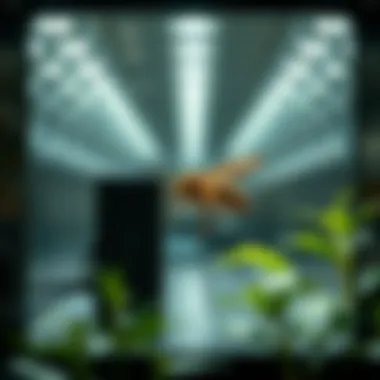
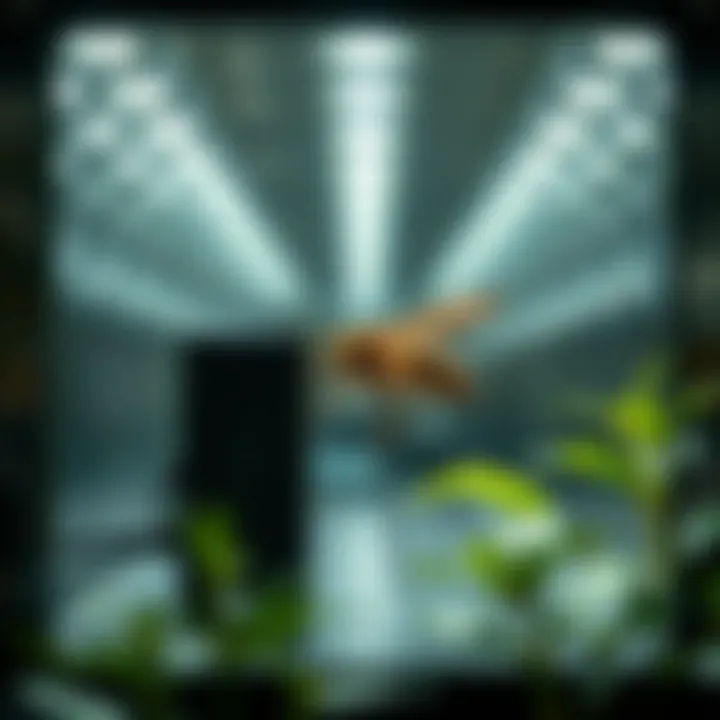
Light Pollution
Light pollution stands as another considerable challenge to the effectiveness of insect light traps. In urban environments, excessive artificial light can confuse insects, leading them to avoid traps altogether. The strong glow from streetlights or neon signs diminishes the overall effect of traditional traps, rendering them less effective.
Implications of Light Pollution:
- Distracting Insects: More artificial lights may mean fewer insects attracted to traps as they are drawn to other light sources.
- Reduced Effectiveness at Night: In areas flooded with artificial light, the appeal of light traps drops significantly.
In this context, understanding light pollution is vital. Lowering ambient light helps increase the chances of capturing certain pests effectively. Adjusting trap placement or adopting measures to mitigate light pollution could lead homeowners to reap better results from their insect traps.
”Awareness of limitations in any pest control method is key. This includes understanding specific targets and external influences.”
Installation and Maintenance
The effectiveness of industrial insect light traps largely hinges on proper installation and ongoing maintenance. When these traps are set up correctly and kept in optimal condition, they can operate at peak performance, making them invaluable tools in pest management. Neglecting these aspects, on the other hand, can lead to diminished returns, marking the difference between a successful pest control strategy and a futile effort.
Optimal Placement Strategies
Selecting the right locations for your insect light traps is akin to finding the sweet spot when fishing. You wouldn’t cast your line just anywhere; you’d look for the areas where fish congregate. Similarly, placing these traps where insects are likely to be drawn enables better capture rates.
Here are some strategies to consider for optimal placement:
- Identify Hotspots: Look for entry points like doors, windows, and gaps where insects may infiltrate. Positioning traps near these areas can significantly increase efficacy.
- Elevation Matters: Traps should ideally be mounted at eye level or a bit higher. Many insects are naturally drawn towards light sources that are higher in their environment, mimicking how they navigate in nature.
- Consider Surroundings: The immediate environment around the traps also affects their success. Avoid placing them near objects that could block or absorb light. Open spaces with minimal interference work best, as trapped insects should not have obstacles around that could sway their path away from the traps.
- Space Them Carefully: If you’re utilizing multiple traps, consider spacing them strategically. Placing traps too close together can lead to competition for attracting insects, whereas spreading them out properly allows each trap its own unique capture zone.
"Proper placement of insect traps is just as crucial as the trap itself. It’s all about the dance of light and shadows."
Regular Maintenance Needs
Once your traps are installed, maintaining them should be a top priority. A light trap that is malfunctioning or dirty can easily become less effective, leading to a rise in unwanted pests. Here are some essential maintenance practices to keep in mind:
- Frequent Cleaning: Dust, dirt, and even small insect residues can build up on traps. Regularly clean the surfaces to ensure unobstructed light and efficient operation. Depending on your environment, a bi-weekly to monthly cleaning might be necessary.
- Check Light Sources: Light bulbs are the heart of your traps. Regularly check and replace bulbs as needed; a burnt-out bulb means your trap could be doing nothing at all. Be sure to use the correct wattage for the best results, as using inappropriate bulbs can drastically cut down attraction rates.
- Inspect for Damage: Physical wear and tear can diminish a trap's ability to capture. Make it a habit to inspect them routinely for signs of damage or malfunction, and address any issues promptly.
- Monitor Performance: Keeping track of the number of insects caught can provide insights into the effectiveness of your traps. If capture rates drop, it might hint at a need for maintenance or relocation of the traps.
By prioritizing these installation and maintenance strategies, homeowners and housewives can ensure their industrial insect light traps provide the desired pest control benefits while acting as a silent guardian against flying nuisances.
Environmental Impacts
The role of industrial insect light traps pushes beyond mere pest control; it ties deeply into environmental stewardship and sustainability. Understanding the environmental impacts of these devices is crucial for optimizing their use and ensuring that they contribute positively to both ecosystems and human habitation. This section explores essential aspects of ecosystem balance and sustainable practices associated with industrial insect light traps, giving a comprehensive perspective for homeowners and those keen on maintaining pest-free surroundings.
Ecosystem Balance
When pondering over insect control, one must remember that even pests play a role in our ecosystems. Using insect light traps allows for targeted pest reduction without drastically disturbing the complex ecological systems in which they exist.
These traps primarily attract nocturnal moths, flies, and beetles. By selectively capturing these species, they help maintain the balance of local wildlife populations. This method prevents the eradication of beneficial insects, such as pollinators and predatory species, which are vital for plant health and agricultural productivity.
Additionally, the attraction and capture mechanism often includes a combination of UV lights and specific wavelengths that appeal to certain insects. This precision decreases the likelihood of trapping non-target species. Consequently, using insect light traps can lead to a healthier environment. To sum it up:
- Targeted Control: Minimizes impact on beneficial insects.
- Preserved Biodiversity: Encourages a balanced ecosystem.
- Reduced Chemical Use: A safer option compared to chemical pesticides.
"In the pursuit of a pest-free environment, we must tread lightly to preserve the delicate balance of nature."
Sustainability Practices
Sustainability is more than a buzzword; it's a critical aspect of modern pest management. Industrial insect light traps stand as a sustainable alternative to traditional methods, merging effectiveness with ecological responsibility. The design and materials of these traps often reflect eco-friendly practices, reducing their overall carbon footprint.
Here are some sustainability practices connected with the use of insect light traps:
- Energy Efficiency: Many models rely on LED technology, which uses significantly less energy than traditional lighting. This not only helps reduce electricity costs but also curtails environmental impact.
- Longevity and Reusability: High-quality traps tend to have longer lifespans, minimizing waste and promoting reuse. Proper maintenance can extend their usefulness even further.
- Materials Matter: Several manufacturers are now producing traps made from recyclable or biodegradable materials. This reduces waste and aligns with the growing demand for greener products in pest control.
- Integration with Ecosystem: The thoughtful placement of light traps can enhance local fauna, allowing beneficial species to thrive without interference.
Comparative Analysis with Other Pest Control Methods
In the ongoing battle against pest invasions, the selection of the right control method is paramount. This section aims to shed light on various approaches available within pest management, particularly in how industrial insect light traps stack up against traditional methods. Understanding these differences allows homeowners, landlords, and enthusiasts to make informed decisions that harmonize effectiveness with environmental stewardship.
Chemical vs. Non-Chemical Approaches
When it comes to pest control, a significant divide exists between chemical and non-chemical approaches. Chemical methods often utilize insecticides that can be effective in managing pest populations quickly. However, their application comes with concerns about toxicity to both humans and the environment. Many homeowners find themselves in a quandary—while chemical treatments may provide instant relief, they also risk potential harm to pets, children, and beneficial insects.
In contrast, non-chemical approaches, such as industrial insect light traps, offer a more sustainable route. These traps operate on principles of attraction without introducing harmful substances into living spaces.


A few key points when comparing these methods include:
- Safety: Non-chemical methods are generally safer for use in homes and commercial spaces.
- Efficacy: Chemical methods can yield faster results, yet non-chemical strategies, like light traps, can provide ongoing control with less risk.
- Environmental Impact: Non-chemical approaches can uphold ecosystem balance by sparing beneficial insects, while chemical treatments may disrupt this balance.
The choice often boils down to a balancing act: immediate results against long-term wellbeing.
Combination Strategies
A blending of approaches can often yield the best results, especially in complex pest management scenarios. Combination strategies underscored by both chemical and non-chemical methods can be particularly effective. For instance, industrial insect light traps may be used as a frontline defense, capturing flying pests without risk, while judicious use of targeted chemical applications can address other issues swiftly.
Some beneficial combination strategies include:
- Targeted Application: Utilize light traps to monitor and trap flying pests, while applying pesticides selectively based on the monitored population levels.
- Preventative Measures: Use light traps alongside structural modifications, such as sealing entry points to minimize pest access.
- Integrated Pest Management (IPM): Implementing a method that includes monitoring with light traps and interventions only when pest levels cross a threshold, reducing unnecessary chemical use.
By integrating these diverse tactics, homeowners and landlords can optimize their pest control strategies, ensuring a robust defense against infestations while maintaining a safe environment for all inhabitants.
Future Perspectives in Insect Light Traps
The development of industrial insect light traps has reached a critical juncture, where technology and sustainability converge. Understanding future perspectives in this field is not just a matter of keeping pace with advancements; it's about leveraging new innovations to enhance pest management protocols. As our society grows increasingly aware of the environmental impacts of pest control, there is a strong push for solutions that are both effective and eco-friendly. Thus, this section scrutinizes emerging technologies and prevailing market trends that are promising to reshape the landscape of insect light traps.
Technological Innovations
Technological advancements are changing the game in pest management. One of the most notable innovations includes the integration of smart technology in insect light traps. By using sensors and programmable features, these devices can optimize their operation based on varying environmental conditions. Imagine a trap that not only captures insects but also sends real-time data on insect population to your smartphone!
Additionally, there is a move towards using solar-powered traps, which eliminate the need for electrical connections and are a boon for remote areas or farms.
Key innovations to consider might include:
- AI Integration: Enhanced pattern recognition for identifying and targeting specific pest species.
- Multi-Attraction Sources: Combining different wavelengths of light to lure in a broader range of pests.
- User-Friendly Interfaces: Making data accessible through mobile apps for easier monitoring.
These innovations not only enhance the efficiency of light traps but also support a shift toward sustainable practices in pest management, reducing reliance on chemical methods.
Market Trends
As the pest control market evolves, several trends are emerging that reflect changing consumer preferences and increased regulatory pressures.
Sustainability is at the forefront. Consumers, especially homeowners, are leaning towards eco-friendly solutions. As such, products that offer non-toxic pest control methods are highly sought after. This trend aligns with broader environmental concerns, encouraging manufacturers to innovate.
Another vital trend is the rise of automation. With the hectic pace of modern life, housewives and homeowners are increasingly looking for automated solutions that require less hands-on intervention. This shift aligns well with the sophisticated technology being integrated into light traps.
In addition to that, personalization and customization are becoming notable market demands. Products that allow users to tailor the trap’s settings according to specific needs will likely see greater acceptance.
"The future of pest control lies in harnessing human ingenuity with nature-friendly perspectives!"
This dual focus on technology and consumer preferences is likely to drive growth in the insect light traps market. As these trends unfold, they pave the way for an industry that not only supports pest control efforts but aligns with the values of conscientious homeowners and environmentally aware consumers.
In the end, it’s clear that future prospects for insect light traps are bright, driven by innovation and market responsiveness.
Epilogue
In wrapping up this discussion on industrial insect light traps, it’s clear that these tools play a crucial role in pest management across various sectors. Addressing both efficiency and ecological awareness, the relevance of these traps becomes more pronounced as the challenge of pest control evolves in the face of changing environmental conditions and consumer preferences.
Summary of Key Takeaways
- Functionality: Industrial insect light traps work primarily through light attraction, capturing pests effectively while avoiding toxic chemicals.
- Environmental Benefits: These traps not only manage pests but also align with sustainability practices, thereby contributing positively to ecosystem balance.
- Innovative Designs: Continuous advancements in technology mean that traps are becoming more efficient and user-friendly, offering optimal solutions tailored to specific environments.
- Market Trends: There is a noticeable shift towards eco-friendly methods, positioning insect light traps as a preferred choice among consumers and businesses.
- Challenges and Considerations: While effective, factors like target species and environmental conditions must be considered to enhance their efficacy.
In essence, industrial insect light traps represent a proactive step towards a cleaner, pest-free environment. Their role in maintaining hygiene in commercial and industrial settings is unmatched, making them indispensable in today’s pest management frameworks.
Final Thoughts
Considering the increasing global awareness of environmental issues, the adoption of insect light traps seems not just favorable but necessary. They bridge the gap between effectiveness and sustainability, enabling a practical approach to pest control that safeguards our health and environment.
As technologies continue to progress, it is exciting to envision just how these tools will evolve. The integration of smart technologies, such as sensors and automation, could redefine how we perceive pest management, making it more efficient and adaptable to changing conditions.
Choosing quality light traps, understanding their operation, and complying with maintenance guidelines will further optimize their effectiveness. In this way, individuals and businesses can collaborate in the overarching goal of creating cleaner, pest-free spaces, emphasizing health and sustainability for generations to come.
By harnessing the power of light, we illuminate our spaces as well as our path toward a more balanced coexistence with nature.
For further reading, you might find these resources useful:
By keeping abreast of market trends and scientific advancements, stakeholders can ensure the continued relevance of light traps in our ongoing struggle against invasive pests.















